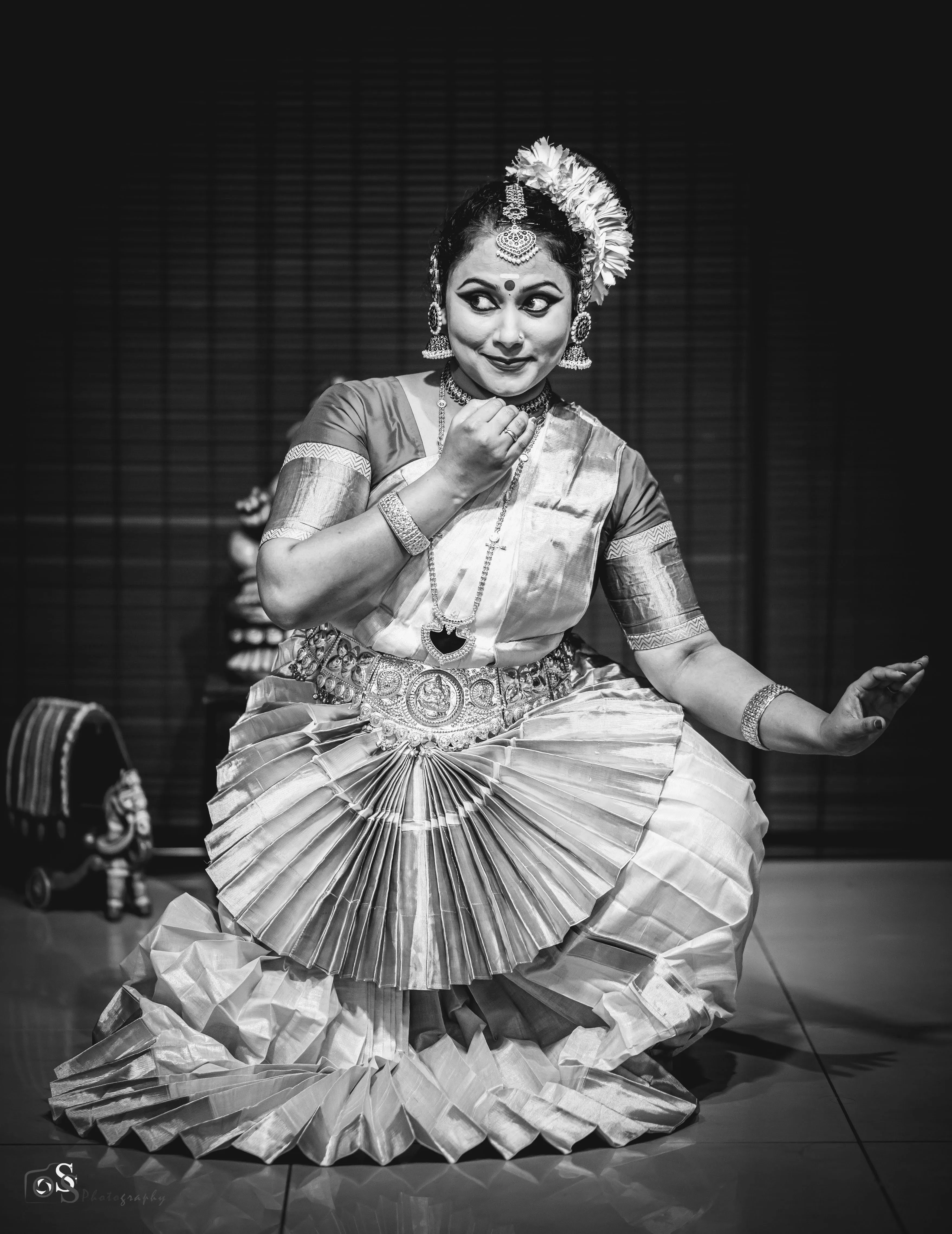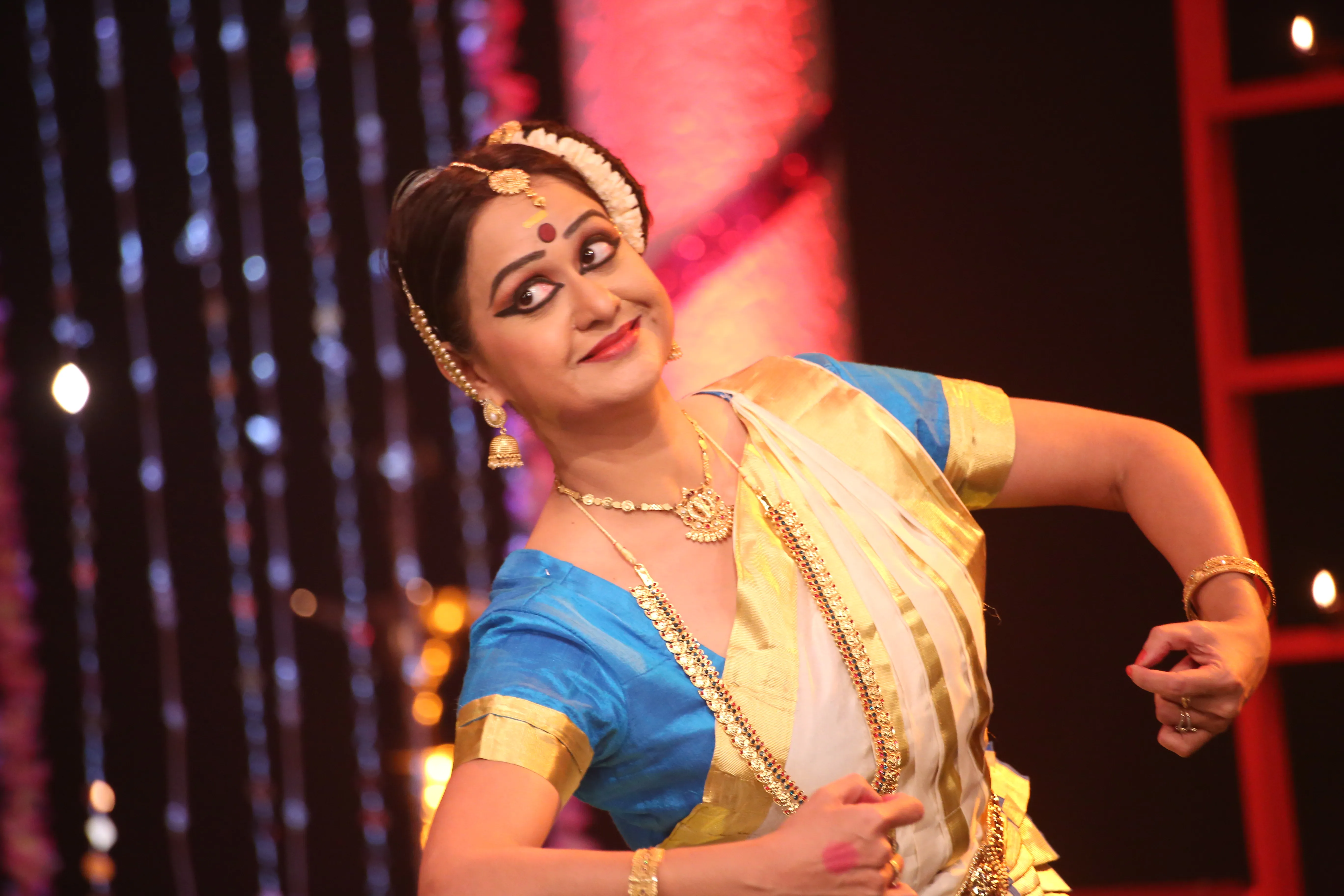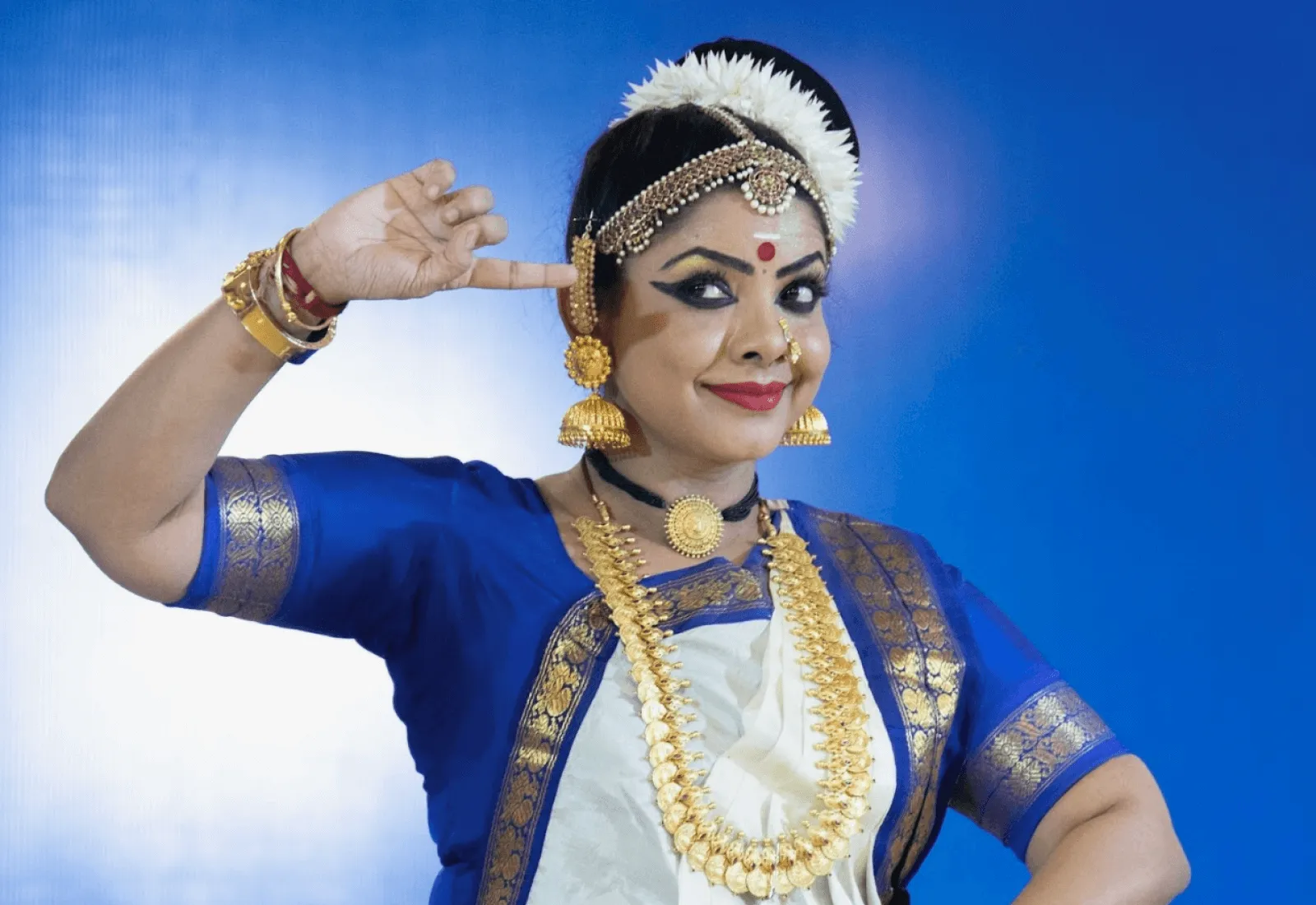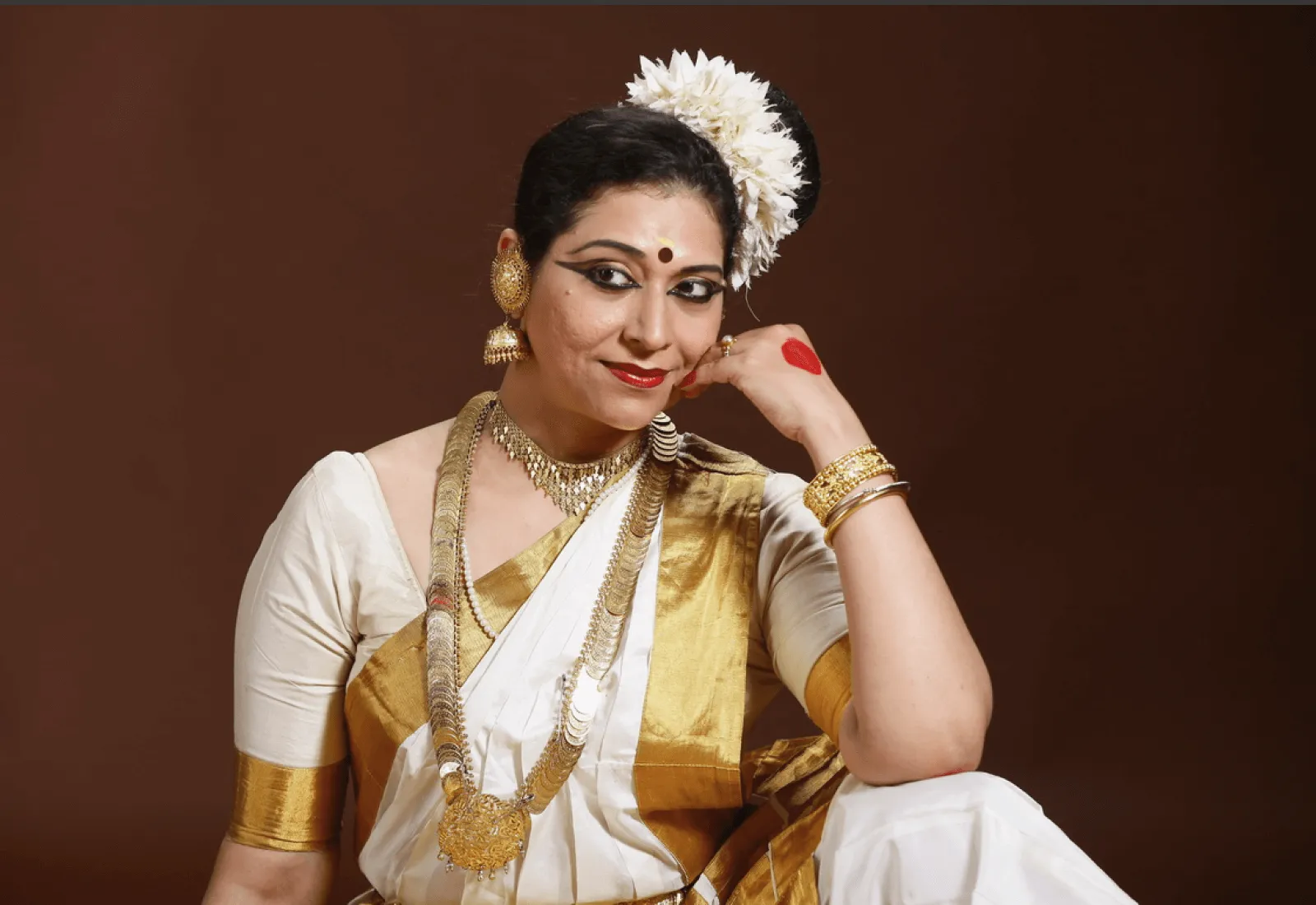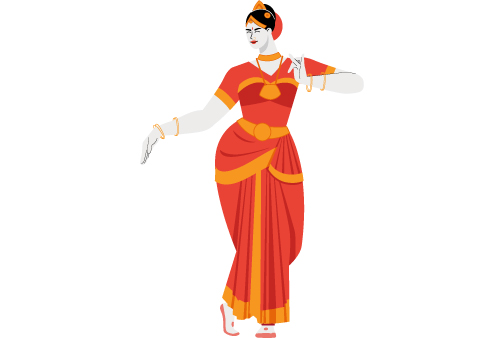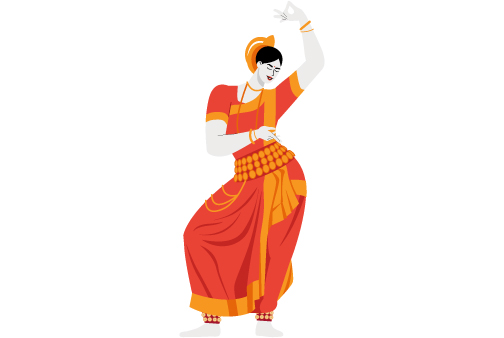Introduction to Mohiniyattam
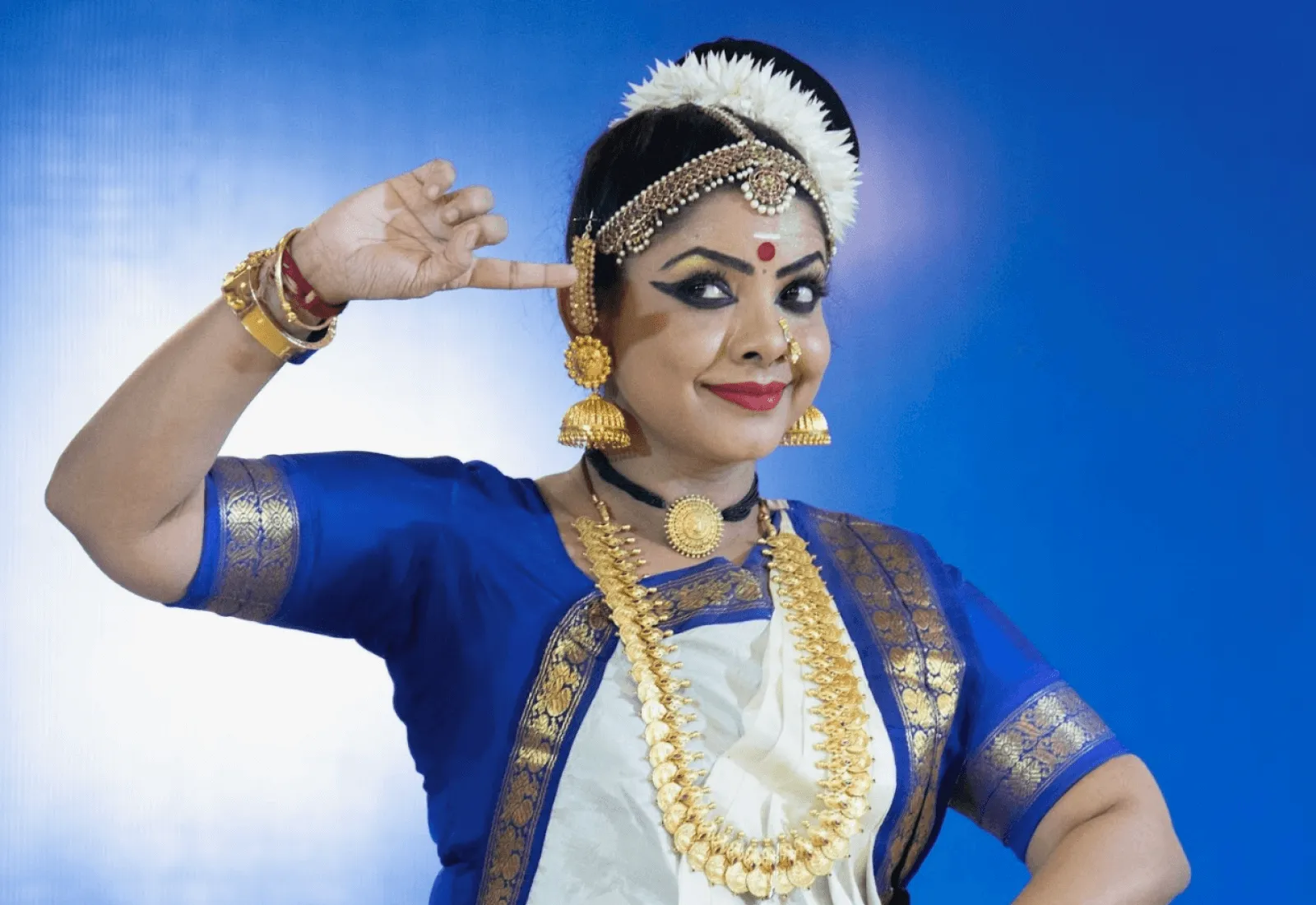
To begin to understand the Mohiniyattam dance, one must first understand its origin. The meaning of Mohiniyattam begins with the figure Mohini, the female avatar of Vishnu. Mohini is a supreme enchantress who uses her femininity to gain the advantage of good against evil. Mohini comes from the verb root moha, meaning to perplex or cause delusion. This classical Indian dance tradition has embodied the essence of female beauty and allurement for centuries and continues to be widely performed today.
Mohiniyattam is an Indian classical dance form that showcases the graceful, gentle, and cunning aspects of the female form. It is traditionally and primarily performed by women but has been studied and performed by people of all genders. This dance style is used to emote a story through various forms of precise movement. Although the movements involved have been taught throughout the years in a standardized format, this art form remains firmly grounded in creativity, interpretation, and emotion.
This style of dance evolved in Kerala, whose temple structures are the earliest manifestations of feminine Mohiniyattam poses. Today, the practice and performance of the Mohiniyattam dance remain a vital point of the culture. This dance is performed in private recitals and in public gatherings to encourage tourism, honor tradition, celebrate, and respect the female form.
Origin & History of Mohiniyattam
Ancient
In the Puranic epic Mahābhārata, Lord Vishnu took the form of Mohini to seduce and beguile Asuras—beings in opposition to gods. Lord Vishnu, as Mohini, appears in many stories using her wit and beauty to beguile and conquer her enemies. Mohiniyattam originated from the writings of Bharata Muni. The first complete compilation of texts defining the Mohiniyattam dances the Natya Shastra, dated 200 BCE. The text explains the most basic of elements utilized in the two classical forms of dance—the high-energy and vigorous Tandava dance of Shiva, as well as the gentle, calm, and graceful Lasya dance of Parvati. Mohiniyattam more closely follows the structure and intent of the Lasya dance in the Natya Shastra text.
Mohiniyattam dance as an artistic expression in India has endured a history of many challenges. While the exact period of origin of Kathak is unknown, it is traced back to the temples of Kerela, where dancers assisted in temple rituals by performing interpretive dances to accompany the spoken mantras chanted by the temple priests. However, when the Chera Empire fell, (the Perumal regime) the socio-economic changes forced the dancers out of the temples and this art form struggled as practices began to fade. Some dancers joined the Nangiars (women of the Nambiar community) who still practice these dances in temples today, following a strict code of dance. Meanwhile, the dancers who remained were used to entertain feudal chiefs, causing serious degradation of the practice, ultimately leading to its downfall.
Medieval
This dance form was resurrected when Swati Tirunal ascended the throne in 1829 and worked to promote all fine arts. It was during this time that Mohiniyattam gained structure as Vadivelu constructed a proper repertoire that included the Chollukettu (the beginning of a Mohiniyattam performance defined as an invocation including an offering to the goddess Bhagavati, and ending with a prayer to Shiva). Once the rule of Swati Tirunal ended, Mohiniyattam entered into another dark age, partially due to a lack of royal patronage.
To further the demise of the tradition, during British rule in the 19th century, most classical forms of dance in India were ridiculed as seductive, equating performing artists with prostitutes. At the start of the 20th century, the book The Wrongs of Indian Womanhood depicted the tradition as “harlots, debased in erotic culture, [including] slavery to idols and priests.”
Modern
By the 19th century, Vallathol Narayana Menon helped to repeal the ban on temple dancing and started the Kerala Kalamandalam, the first institute for training in forms of art. The institute established Guru Krishna Panikker and Kalyani Amma as the first formal teachers of the Mohiniyattam dance.
Mohiniyattam dance is still rooted in the teachings of medieval times, including swaying and graceful movements with no abrupt jerks or leaps. This is true to the Lasya defining feminine movements as tender and graceful. The modern teachings of Mohiniyattam dance have intentionally excluded any movements that may be viewed as indecorous or obscene. Today, the complete study of Mohiniyattam is defined in a book, Balaramabharatam, written by scholar and king, Karthika Thirunal Bala Rama Varma. The Balaramabharatam is an elaboration of the 6th and 10th chapters of the Natya Shastra.
Principles of Mohiniyattam
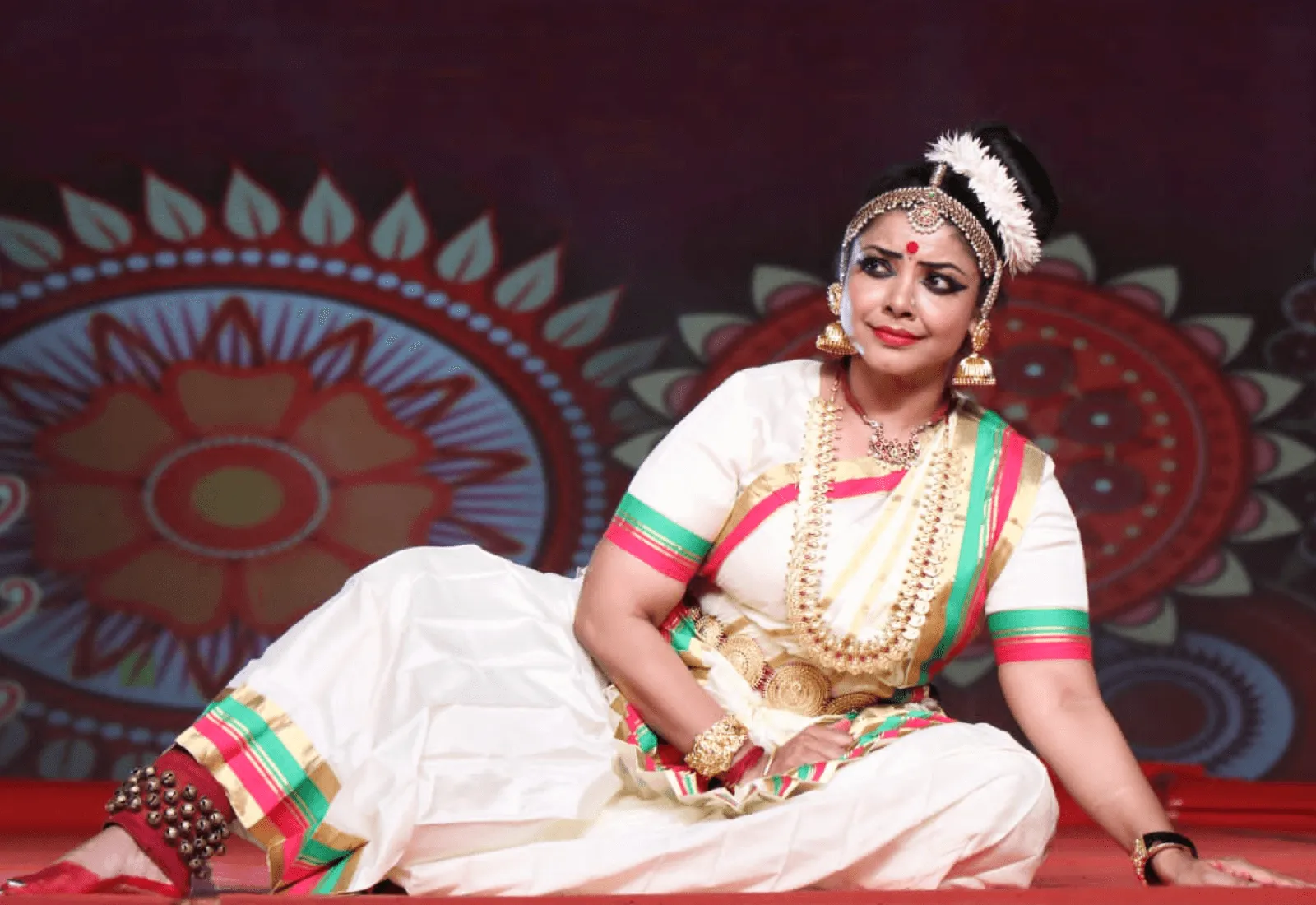
Mohiniyattam dance is broken down into three very broad divisions: Nritta, Nritya, and Natya.
Nritta: Nritta meaning the movement of the body intended to convey shapes and lines in the body without including mood or meaning
Nritya: The interpretive aspect of the dance whereby the meaning and intent of the dance are conveyed using facial expression and hand gestures, allowing the audience to feel the sentiment, or rasa, of the piece.
Natya: The element by which dancers take on the role of performing the characters depicted in the story, including the drama of the spoken word.
The foremost physical lessons any potential Mohiniyattam dancer must master are the adavus. Adavus are defined as “the basic rhythmic units of dance within a specific tempo and time structure that involves composite movements pertaining to Nritta.” Mohiniyattam is comprised of nearly 60 adavus, divided into five sections according to the Chollu, or rhythmic structure.
There are five basic postures, or mandalams, in the Mohiniyattam style:
• SAMAM - the practice of steady head and eyes with the body straight and legs together
• KALMANDALAM - slightly bent knees with feet placed precisely at two fingers lengths apart. The prefix KAL means quarter, as in a quarter lower than SAMAM.
• ARMANDALAM - the body lowers slightly more than the KALMANDALAM posture, with the knees coming into alignment with the thighs parallel to the floor. The prefix ARA means half.
• MUKALMANDALAM - lowering the body slightly, further still from the ARMANDALAM posture. The prefix MUKAL means three-quarters.
• MUZHAMANDALAM - When the dancer then sits down fully on her raised toes. The prefix MUZHU means full.
Practiced dancers in the art of Mohiniyattam also learn accompanying stretches and exercises that include the body, head, eyes, hands, and feet. This practice ensures that the poses are performed with strength and agility. Along with these basic postures, Mohiniyattam relies on texts from Hastha Lakshandeepika, a treatise on hand gestures also known as Mudras.
Mohiniyattam Compositions
The repertoire of Mohiniyattam dance performances involves five different dance pieces:
• Cholkettu: The beginning consisting of rhythmic syllables in tune with the raga and the pure dance patterns that are appropriate for the composition.
• Jatisvaram: This section is composed of pure body movements and is typically free of theatrical elements.
• Varnam: During this phase, the dancer transitions between pure dance and explanatory dance movements, including facial expressions and gestures.
• Padam: Focusing more on the theatrical aspect f the dance while conveying the story.
• Tillana: Finally, the dancers conclude performances with a show of their full ability, typically accompanied by fast music utilizing more complex and expressive body and footwork.
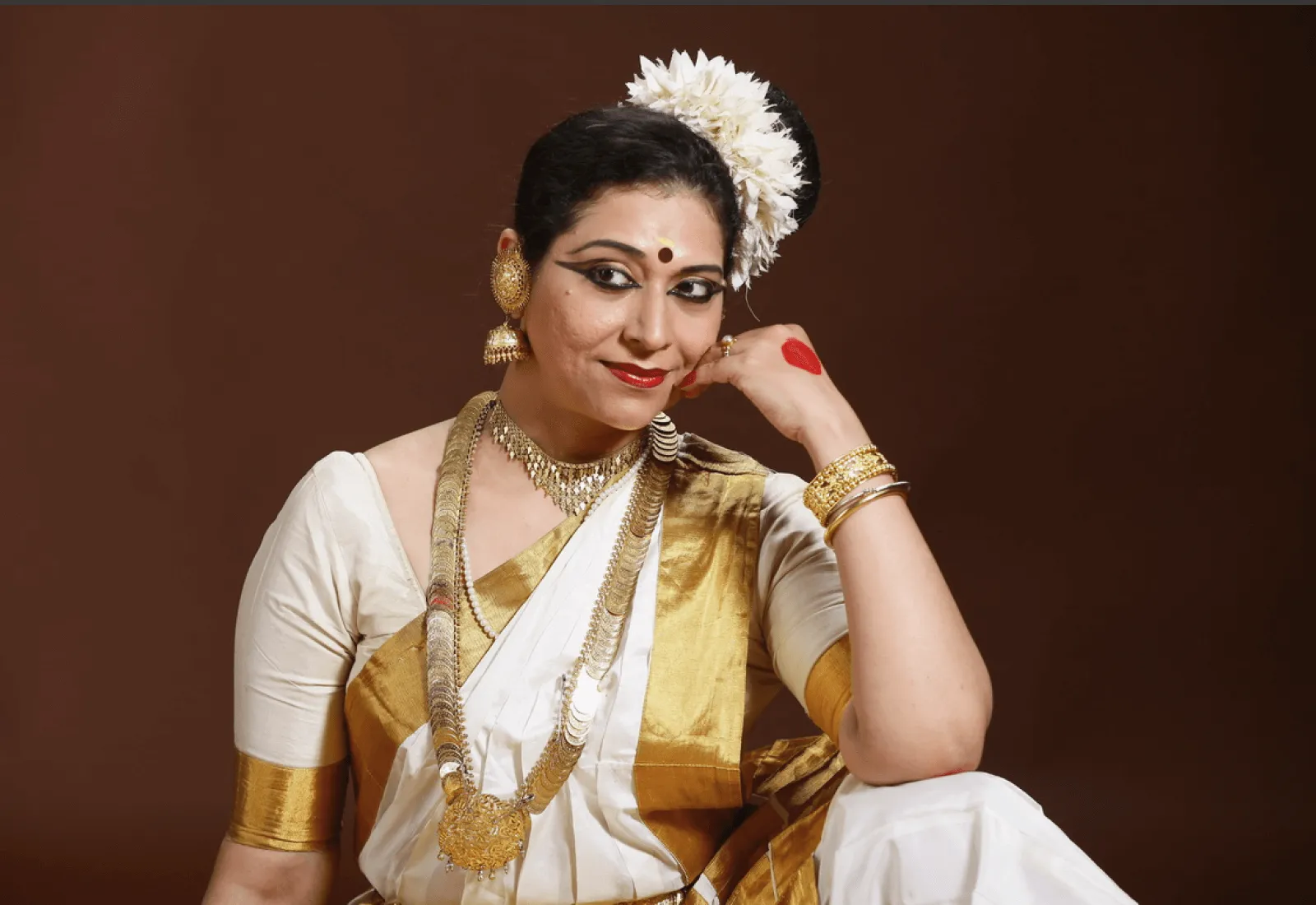
Mohiniyattam dancers are adorned in traditional costume and makeup, including a white and gold-bordered Kasavu saree and gold bangle bracelets or earrings. The attire of this practice is derived from the traditional attire of the Kerala people. Makeup and hair arrangements are standardized, as well, to promote and emphasize dramatic facial expressions.
Famous Mohiniyattam Dancers
List of Famous Mohiniyattam Dancers
1. Aline Civinelli
2. Anne Dietrich
3. Dr. Rekha Raju (View her course)
4. Gopika Varma
5. KM Abu
6. Kalamandalam Hymavathy
7. Kalamandalam Radhika
8. Momm Chatterjee (View her course)
9. Neena Prasad
10. Pallavi Krishnan
11. Radha Dutta
12. Radha Marar
13. Rema Shrikant
14. Sindhu Kiran
15. Sunanda Nair




